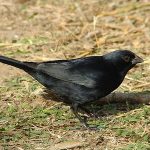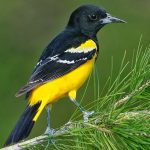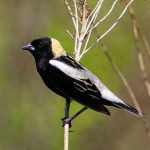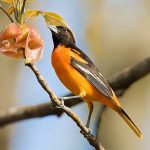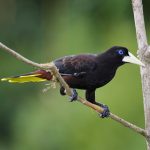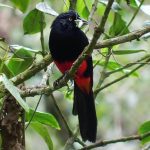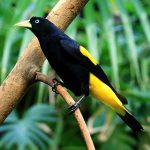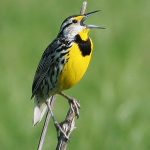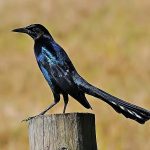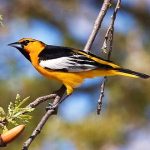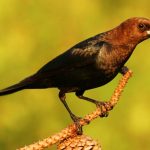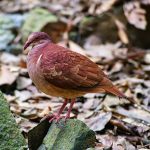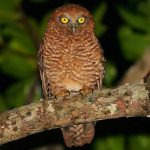Yellow-tailed oriole
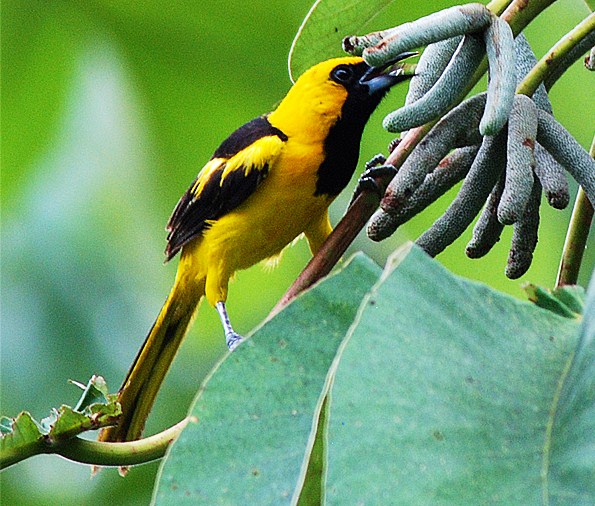
Icterus mesomelas
 |
| Photo by Bill Lynch (Neotropical Birds) |
Common name:
yellow-tailed oriole (en); corrupião-de-cauda-amarela (pt); oriole à queue jaune (fr); turpial de cola amarilla (es); gelbschwanztrupial (de)
Taxonomy:
Order Passeriformes
Family Icteridae
Range:
These birds are found from southern Mexico down to western Peru and north-western Venezuela.
Size:
Yellow-tailed orioles are 20-24 cm long and weigh around 70 g.
Habitat:
These birds are found in tropical lowland areas, generally in woodlands, forest clearings and scrublands. They are also common in agricultural areas, namely Heliconia stands, Manila hemp, and banana plantations. They are present from sea level up to an altitude of 500 m.
Diet:
Yellow-tailed orioles mostly eat insects and spiders, but will also consume nectar and certain fruits such as gumbo-limbo Bursera simaruba.
Breeding:
They breed in April-November. The female builds a deep, basket-shaped nest made of plant fibres, which hangs from a thorny scrub about to 2 m above the ground. There she lays 2-3 light blue eggs with brown spots, which are incubated for 14 days. The chicks fledge 13 days after hatching.
Conservation:
IUCN status – LC (Least Concern)
The yellow-tailed oriole has a large breeding range and a global population of 500.000-5.000.000 individuals. The population is suspected to be stable in the absence of evidence for any declines or substantial threats.
